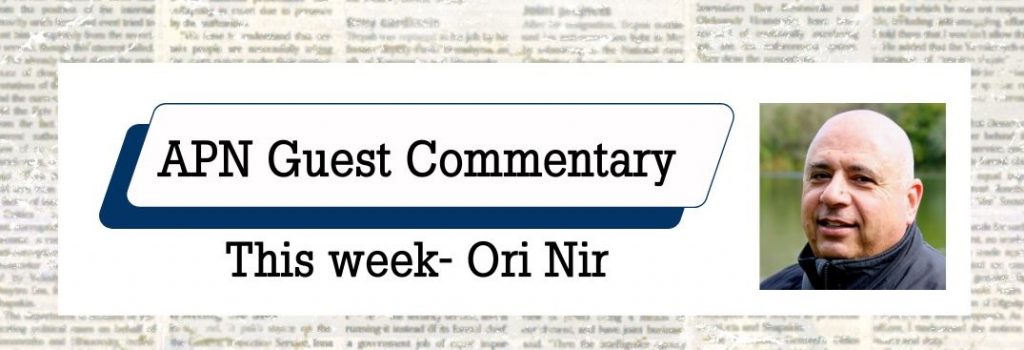
Today is the first day of Americans for Peace Now’s 2024 tour to Israel and the West Bank, an exciting day for APN -- and for me personally.
It is a special day for me because this year’s tour comes with an especially heavy sense of responsibility and anxiety. It is also special because this will be my last APN tour before my retirement, less than a month from now.
I have been organizing APN’s tours to Israel and the West Bank for almost fifteen years. Conceptualizing and planning them have always required a great deal of thought. Executing them involves creativity and flexibility, occasional frustration, but also tremendous gratification. It’s one thing to tell people about Israel and its conflict with the Palestinians. It’s another thing to show it to participants and witness “aha moments” as they visit the region and talk with Israelis and Palestinians.
Over the years, there have been so many moments in which our tour participants got to see and feel aspects of the conflict and thoroughly comprehend the impact it has on people on both sides, on their attitudes and politics, and on the policies of their leaders.
Such was the case when we took groups to southern Israel, showed them the remnants of Hamas rockets that landed in Sderot and neighboring communities and met with members of “Gaza envelope” kibbutzim who believe in peace and act to pursue it, even after October 7th. We will travel again to the south on Wednesday. This time, we expect a uniquely emotional experience.
Our tour this year is chiefly aimed at gauging and experiencing the impact on Israel of the events following October 7th.
On that day, as armed Gazans massacred more than a thousand Israelis, I messaged my friend Amir Tibon who lives in Kibbutz Nahal Oz. I remembered how Amir and his father, General (Res.) Noam Tibon hosted us at the kibbutz in 2016. They showed us around Nahal Oz and took us to the border fence. We saw construction crews fortifying the fence (the same fence that Palestinian guerillas easily broke on October 7th. Scenes from that day played in my mind as I was messaging Amir on October 7th, to ask if he and his family were safe. Finally, as evening set in Israel, I received a one-word text from him. “Yes.” I later heard the heroic story of Noam Tibon, who on that day drove south with his wife to rescue Amir and his family, and on the way rescued many others. I am looking forward to this year’s group meeting with Amir Tibon, who is now writing a book about the events of that day.
Recently I also recalled a visit to Sderot with another group. We climbed a hill that overlooks the Gaza Strip. Our guide, the late Zohar Avitan, a peace activist and local leader from Sderot, who for years used his local radio show to try to build bridges to Gazans, told us that Israel’s relationship with Gaza was untenable and that it was bound to one day blow up in Israel’s face.
APN tour groups did visit Gaza in the 1990s, but stopped since the second intifada. It was certainly not an option after Hamas took power in 2007. But visits to Ramallah and other parts of the West Bank have always been a staple of our tours. In fact, this year is the first in which we are not going into Area A of the West Bank (the area that is under administrative and security control of the Palestinian Authority) because of the crisis that the war has created.
In past visits, we met with senior Palestinian officials, including President Abbas, prime ministers, and cabinet officials, as well as civil society activists, academics, businesspeople, and many others. The most interesting, though, were meetings with Palestinians who were not in positions of power. Several years ago, we chatted with a group of men at a refugee camp near Ramallah. Another time, we spoke with villagers near a settlement in the southern West Bank. Last year, we saw Bedouins at the South Hebron Hills.
The most troubling excursions are to Hebron, where the oppression and injustice of the occupation are in full view, where Jewish supremacy reigns supreme. We make a point of showing our group the Meir Kahane park at the neighboring settlement of Kiryat Arba, where the grave of mass murderer Baruch Goldstein, who shot to death 29 Muslim worshippers at a Hebron mosque in 1994, has become a pilgrimage site for Israeli national religious zealots.
We always make a point of meeting with Israeli and Palestinian peace activists on our tour, to show our tour participants, mostly American Jews, that they have like-minded partners in Israel, pro-peace, pro-democracy, liberal Israelis who share their worldview and value system. It is usually the most heartwarming and hope-inspiring part of the tour.
If you want to understand the Israeli-Palestinian conflict, if you wish to see and experience the challenges to resolving the conflict and seek inspiration for future resolution, you must visit the place. You must see it for yourself and hear from relevant people. Some have joined our tours twice, three or even four times. Take my advice as I embark on my last APN tour before retirement: join an APN tour. At least once.